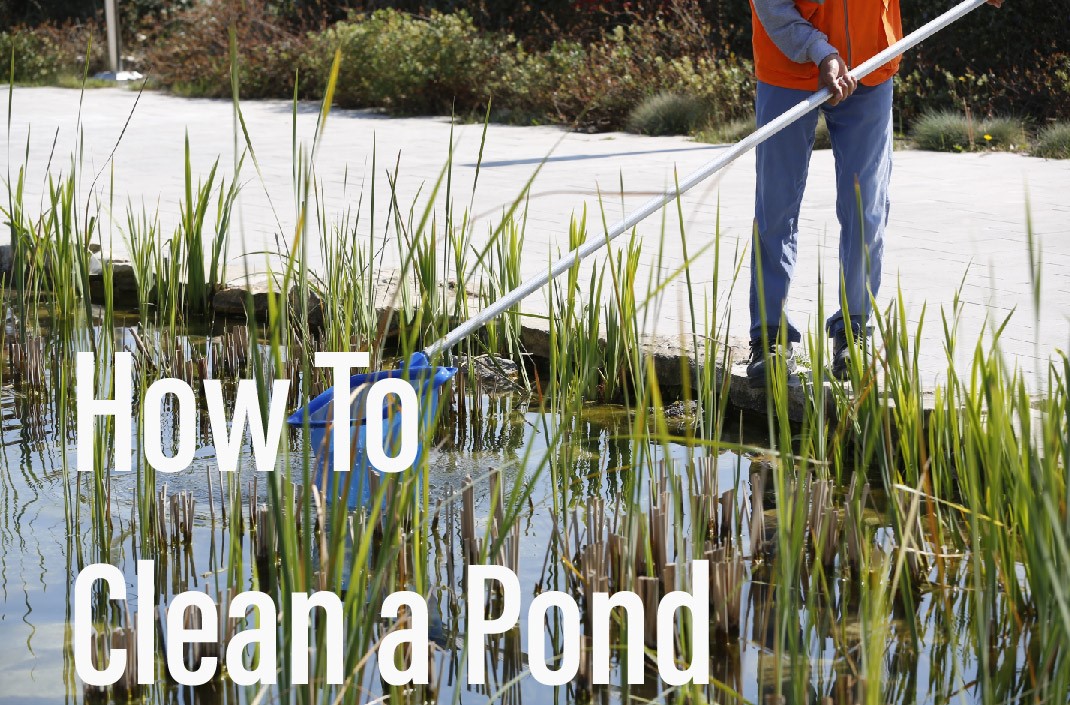How to Clean a Pond
Feb 13th 2023
Besides beautifying a landscape, ponds provide a ready source of irrigation or emergency water and provide many other practical and aesthetic benefits. Like most things, a pond requires a bit of maintenance, whether it is natural or artificial.
Occasional cleaning will help keep your water feature looking and smelling good. Read on for some basic tips from DripWorks on how to clean a pond and keep it crystal clear.
Start at the Top
If you are wondering how to keep pond water clear, it's smart to start at the surface. Besides making your pond look more attractive on the surface, cleaning leaves and debris from the top will keep the sides and bottom cleaner by avoiding decomposition of surface matter.
For smaller ponds, a net, brush or scoop may be all you need to remove organic matter from the surface. If you have a larger water feature, automatic pond skimmers provide an easy solution. Because it has high capacity, a box skimmer is ideal for big ponds. Floating or submerged skimmers provide an affordable solution for smaller waterways.
Getting to the Bottom of Things
Once you have cleaned your pond surface, it's time to take a deeper dive. Many folks believe they have to drain their ponds for cleaning. This is seldom the case, except in the most dire situations.
Usually, you can use a pond vacuum to clean your pond's sides and bottom. These specialty vacs can be purchased at pond supply stores or online. They vacuum algae and muck off the sides and bottom of water features without removing the water.
In bad cases, you may have to drain your pond to give it a good scrubbing. If your pond contains fish or plants, you will want to remove them before draining the pond and keep them in a wet environment, like a bucket or a kids' plastic swimming pool.
You can use a clean-out pump to remove water from the pond. If the waterway is small and on a higher elevation, you can also siphon its water out with a simple garden hose.
Use a shovel or similar tool to muck out the bottom of the pond. Scrub the bottom and sides with a brush. Don't use harsh cleansers that could leave a residue that could kill fish or plants.
It's also a good idea to leave a little algae behind. If it doesn't grow out of control, string algae can actually benefit fish by providing them cover. It can also absorb nutrients in the water that might encourage the growth of harmful bacteria, such as blue-green algae, which actually is a layman's term for many types of bacteria.
Many folks like to put new water in a pond, assuming it is "clean." This is not always a good idea. Most water from municipal sources is chlorinated, which can be harmful to fish and plants. If possible, re-use the water you have already if you had to drain your pond to clean it.
Set a Cleaning Schedule
Generally, you should clean your pond once or twice a year. It usually is a good idea to clean in the fall or spring, when air and water temperatures are cooler and algae and weeds grow more slowly or not at all.
We hope these tips on how to clean pond water have been helpful. If you have questions, feel free to call us toll-free, email us or instant-chat with us.
Here at DripWorks, we know water. We'd be happy to give you some advice to help you with your pond.

